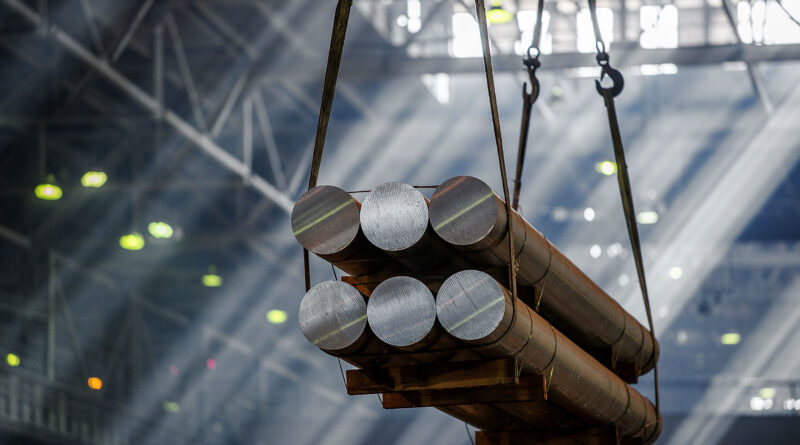Demand for aluminium continues increasing at high rates
It’s difficult to believe but only 150 years ago aluminium was considered to be silver from clay and an extremely expensive kind of metal. Today, aluminium ranks number two in the consumption volumes among all the metals, surpassed only by steel. In the coming decades the demand for aluminium will continue increasing at unstoppable rates.
Recent developments in the motor industry, the rapid growth of cities, new potential uses of aluminium as a substitute to copper in the power industry – these and many other trends mean that the winged metal is well placed to strengthen its dominant position as a key structural material of the 21st century.
The outlook for the aluminium industry in the current year continues to be good overall, in spite of continued political uncertainty, such as the planned US tariffs on aluminium imports, Brexit and the concern that China, as the world’s largest producer of aluminium and semi-finished aluminium products, might expand its exports into European markets.
CHINA CONTINUES TO BE THE PRIMARY DRIVER OF GROWTH
The People’s Republic of China has long since become the world’s largest producer of aluminium, but even demand is growing there faster than anywhere else. China continues to be the primary driver of growth in the aluminium industry, and e-mobility is a major factor.
Global demand for primary and recycled aluminium is being fuelled by the trend towards lightweight construction in the automotive industry. The consumption of aluminium is growing in the booming aerospace industry, while the upturn in the construction industry in continental Europe is also stimulating demand. In addition, demand in the mechanical engineering and packaging markets continues to increase.
LIGHTWEIGHT AUTOMOTIVE CONSTRUCTION STILL HAS A GREAT DEAL MORE TO OFFER
The automotive industry is a key growth driver for the industry, not only due to the continued strong growth in private transportation worldwide, but also to the increasing pressure to utilise lightweight materials to protect the environment and the climate.
The field of lightweight automotive construction continues to develop, and its possibilities are far from being exhausted. And: In light of megatrends such as future mobility, electromobility and additive manufacturing, new solutions and applications employing aluminium materials are increasingly sought-after.
In the lightweight construction sector, aluminium is in competition with other materials, yet even if it should lose market share in individual areas of application, it will find increasing employment in others, and its growth areas will remain larger than the areas in which substitutes are found.
The trend towards energy-saving cars and the material’s excellent reusability, which allows the energy invested in its production to be entirely reclaimed, are certain to increase aluminium consumption.
ALUMINIUM STOCKS IN WAREHOUSES HAVE DECLINED SHARPLY
The high demand has a huge impact on stocks – regardless of whether it be the officially registered volumes found in certified warehouses and listed on metal exchanges such as the London Metal Exchange (LME), stocks held by producers or “secret reserves” of aluminium found elsewhere.
Aluminium stocks in LME warehouses have fallen sharply – the volumes currently held are but one quarter of their level five years ago.
These figures reflect the fact that demand for this lightweight metal has increased markedly compared to the previous century, not only in China but worldwide.
CRU, a metals consultancy, does not expect demand for aluminium to weaken before 2025 at the earliest, and forecasts demand to remain strong – and most likely continue increasing – until then.




